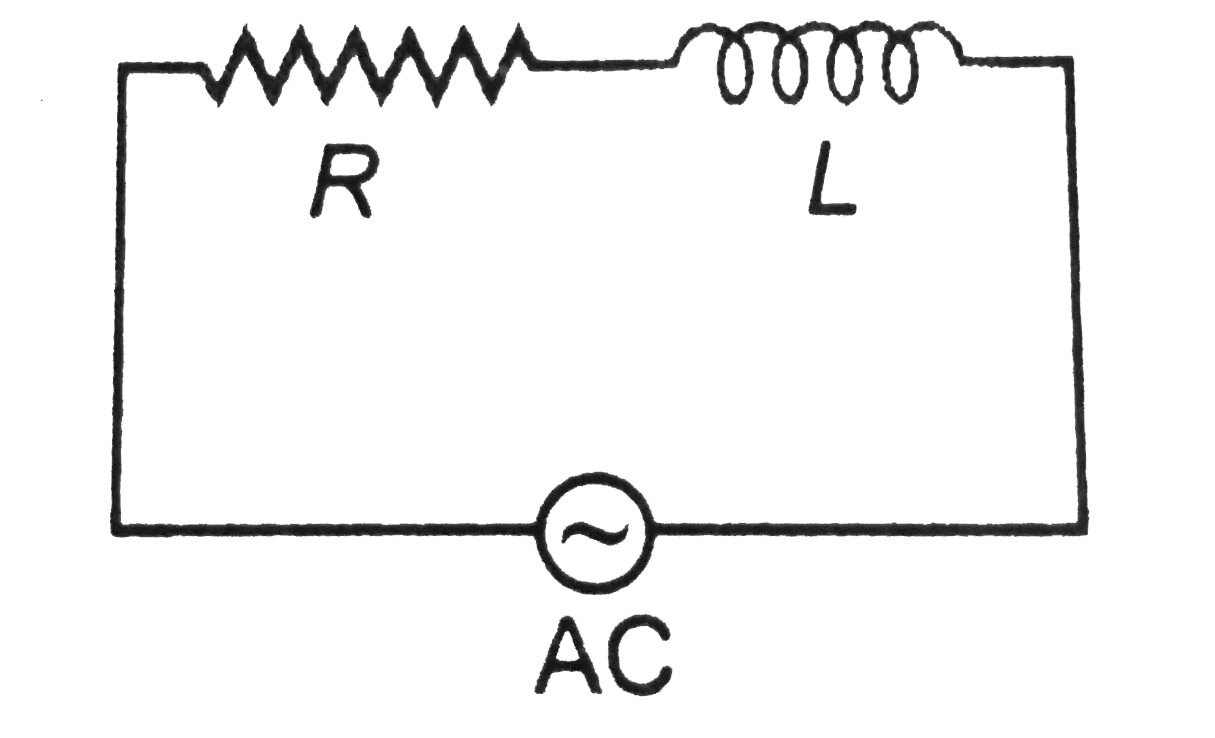An inductive circuit contains a resistance of 10 ohms and an inductance of 2 henry. If an alternating voltage of 120 V and frequency 60 Hz is applied to this circuit, the current in the circuit would be nearly
0.32 A
0.80 A
0.48 A
0.16 A
The correct Answer is:D
To solve the problem step by step, we will follow these calculations:
Step 1: Identify the given values
- Resistance (R) = 10 ohms
- Inductance (L) = 2 henry
- Frequency (f) = 60 Hz
- Voltage (V) = 120 V
Step 2: Calculate the angular frequency (ω)
The angular frequency (ω) is given by the formula:
ω=2πf
Substituting the value of frequency:
ω=2π×60=120π rad/s
Step 3: Calculate the inductive reactance (X_L)
The inductive reactance (X_L) is given by the formula:
XL=ωL
Substituting the values of ω and L:
XL=120π×2=240π ohms
Step 4: Calculate the impedance (Z)
The impedance (Z) in an inductive circuit is given by:
Z=√R2+X2L
Substituting the values of R and X_L:
Z=√102+(240π)2
Calculating 102:
102=100
Calculating (240π)2:
(240π)2=57600π2
Now, substituting these values into the impedance formula:
Z=√100+57600π2
Step 5: Calculate the numerical value of Z
Using the approximate value of π≈3.14:
57600π2≈57600×(3.14)2≈57600×9.8596≈567576
Now, adding this to 100:
Z≈√567576+100=√567676≈754.5 ohms
Step 6: Calculate the current (I)
Using Ohm's law, the current (I) can be calculated as:
I=VZ
Substituting the values of V and Z:
I=120754.5≈0.159 A
Final Answer
The current in the circuit would be nearly 0.159 A.
- Resistance (R) = 10 ohms
- Inductance (L) = 2 henry
- Frequency (f) = 60 Hz
- Voltage (V) = 120 V
The angular frequency (ω) is given by the formula:
ω=2πf
Substituting the value of frequency:
ω=2π×60=120π rad/s
The inductive reactance (X_L) is given by the formula:
XL=ωL
Substituting the values of ω and L:
XL=120π×2=240π ohms
The impedance (Z) in an inductive circuit is given by:
Z=√R2+X2L
Substituting the values of R and X_L:
Z=√102+(240π)2
Calculating 102:
102=100
Calculating (240π)2:
(240π)2=57600π2
Now, substituting these values into the impedance formula:
Z=√100+57600π2
Using the approximate value of π≈3.14:
57600π2≈57600×(3.14)2≈57600×9.8596≈567576
Now, adding this to 100:
Z≈√567576+100=√567676≈754.5 ohms
Using Ohm's law, the current (I) can be calculated as:
I=VZ
Substituting the values of V and Z:
I=120754.5≈0.159 A
The current in the circuit would be nearly 0.159 A.
Similar Questions
An inductive circuit a resistance of 10ohm and an inductance of 2.0 henry. If an AC voltage of 120volt and frequency of 60Hz is applied to this circuit, the current in the circuit would be nearly
View SolutionA circuit contains resistance R and an inductance L in series. An alternating voltage V=V0sinωt is applied across it. The currents in R and L respectively will be
 .
.
View Solution
Knowledge Check
A circuit consists of a resistance 10 ohm and a capacitance of 0.1μF If an alternating e.m.f. of 100 V. 50 Hz is applied, calculate the current in the circuit.
A3.14mAB6.28mAC1.51mAD7.36mA
A circuit contains resistance R and an inductance L in series. An alternating voltage V=V0sinωt is applied across it. The currents in R and L respectively will be
 .
.
View SolutionA coil of resistance 300Ω and inductance 1.0 henry is connected across an voltages source of frequency 300/2πHz. The phase difference between the voltage and current in the circuit is
View SolutionA coil has inductance of 115πH and is joined in series with a resistance of 220Ω. When an alternating emf of 220V at 50Hz is applied to it, then the wattless component of the current in the circuit is
View SolutionAn L-R circuit has R = 10 Ω and L = 2H . If 120 V , 60 Hz AC voltage is applied, then current in the circuit will be
View SolutionThe current in a circuit containing a capacitance C and a resistance R in series leads over the applied voltage of frequency ω2π by.
View SolutionAn AC voltage is applied to a resistance R and an inductance L in series. If R and the inductive reactance are both equal to 3Ω, the phase difference between the applied voltage and the current in the circuit is
View SolutionAn AC voltage is applied to a resistance R and an inductance L in series. If R and the inductive reactance are both equal to 3Ω, the phase difference between the applied voltage and the current in the circuit is
View Solution
